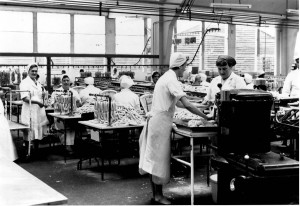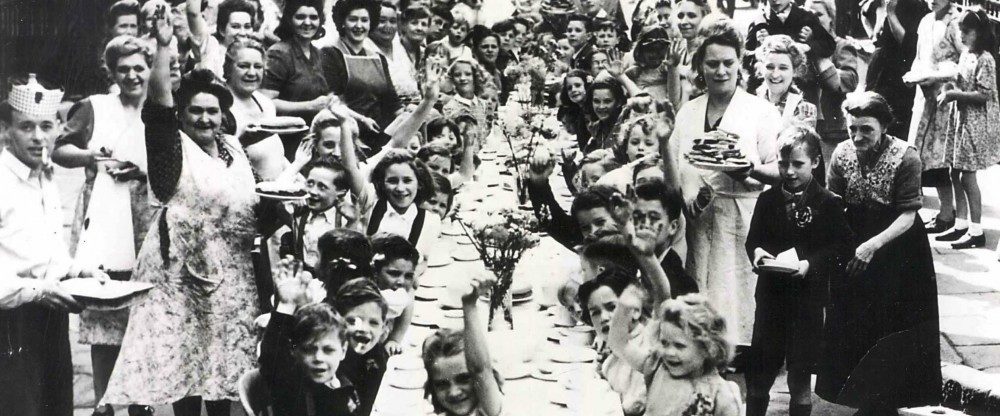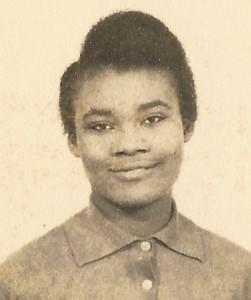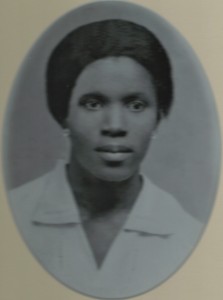The SEEME Wiltshire Black History Group is a Heritage Lottery Funded Black, Asian and Minority Ethnic (BAME) project. It was a joint multi-partnered initiative including Wiltshire County Council and the Wiltshire and Swindon Archives (part of Wiltshire County Council), Wiltshire Music Centre and Salisbury Playhouse. SEEME aim to use oral history to redress the lack of BAME history in the Wiltshire and Swindon Archives and to create learning and participation activities in the community in an educational way. To assist in their aims, Barbara helped to discover Wiltshire’s missing BAME history by training adult volunteers to conduct oral history interviews and went into schools to undertake intergenerational oral history training and oversee them interviewing elderly BAME people. She also trained University of West England volunteer history undergraduates to participate in oral history interviewing too.
Creating A Public History
Wiltshire Jamaican Women Remember Bowyers Sausage Factory 1950s-1990s
Barbara interviewed and recorded the life-story oral histories of some of the Jamaican women who migrated to rural Wiltshire in the 1950s and 1960s. During the course of interviewing she discovered the women had all worked for Bowyers and had some wonderful stories to tell of that time. She developed the public history project for SEEME by organising a special ‘Remembering Bowyers’ get together, which sparked off many more memories.

Wiltshire Jamaican Women Reminiscing About Working In Bowyers
The women all thought that Bowyers was a good employer. It was hard work but fun to work there. In the 1960s there was a jukebox in the canteen. People were friendly, they say there was no racial prejudice. That was outside the factory. The women had no idea of what racism was before they came here, but quickly learned to rise above it and ignore it.

Bowyers Sausage Production early 1960s (courtesy of Trowbridge Museum)
The ‘Remembering Bowyers’ group was very lively with lots of sharing of stories of long-forgotten memories. They remembered various people they had worked with. They remembered when they started using rice skins on the sausages. They also remembered making faggots, scotch eggs and the great big long gala pies. In the 1960s and 1970s they sang as they worked, although this stopped later on because they had to be ‘more serious’ in their work. The worst place to work was the cold store. They laughed about getting accidentally locked in, if that happened, you would never come back out! It was extremely cold in there. They discussed the cold and damp working conditions and the demands of the assembly line. The work was repetitive, such as putting the cold pastry tops on the pies with one hand, and having to keep up to speed; hand twisting sausages for hours at a time. Two of the women suffered arthritis as a result of the conditions. Bowyers paid for people to have heat treatment and physiotherapy.
Mrs Thomas worked for 27 years in the ‘sausage house’ in the new building at Bowyers from 1972-1999. Listen to her talking about her work, the arrival of the machines and how her pay really increased during this time.
Mrs Davis remembers how easy it was to get work in Bowyers in 1957, she worked in the ‘sausage house’ in the old run down building.
The women often did overtime as pay was low in the 1950s and 1960s. Mrs Davis remembers taking home just £5-2-6d, old money, for a forty-five hour week in the late 1950s. But by 1999, Mrs Thomas’ take home pay was over £100 for working a forty-hour week. Inflation contributed to wage increases, but the trade union was responsible for improving both the workers’ pay and conditions. The women were unable to remember exactly when the trade union came in, and we are unable to verify this either, but it is likely to have been in the late 1960s. Perhaps someone can help us here? The company pension scheme came along at this time too.
Bowyers was ‘family friendly’. The women could work shifts to fit in with their children’s schooling. They could take time off to take a child to the doctors. Bowyers always employed their children when they left school or during college holidays. Mrs James remembered her children just turning up at the factory gates and being brought up to where she was working and that children were also welcome in the staff canteen.
The women could not believe it when it closed in 2008. They thought, like many other people, that Bowyers factory would always be there.
“Bowyers was like a family. It was like someone died when Bowyers closed.”
Quoted by an interviewee
Portfolio: Cranborne Chase AONB
Portfolio: Milford Street Bridge Project



